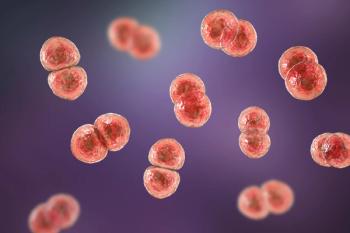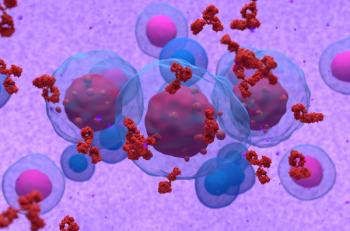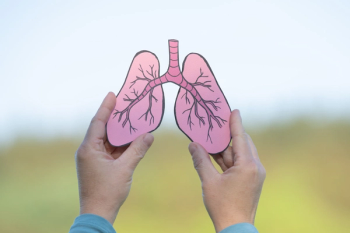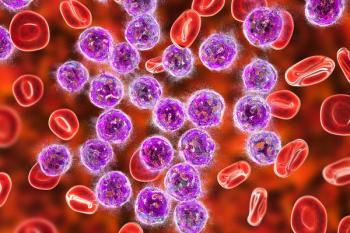
Big Pharma's Biosimilar Stalling Tactics Coming to an End
The current outlook for biosimilar manufacturers shows significant promise.
Part I
Medications on the market today fall into 1 of 2 categories: traditional small molecules or biologic products.
Historically, traditional small molecule products were the focus of the pharmaceutical industry. This was especially the case between 2010 and 2013, when many of the blockbuster brand name medications—those grossing more than $1 billion in annual sales—lost their patent protection.
This period, infamously known as the patent cliff era, was long anticipated, and forecasters projected the impact with a great deal of certainty. As predicted, patent loss quickly equated to the entry of a large number of generic products and an abrupt drop in sales and price of the formerly-exclusive brand products.
Brand name manufacturers strategized to maintain market share and reduce the impact of generic product entry, but the inevitable result was the favorable impact on health care spending, as payers quickly leveraged new generic competition. Plan sponsors realized immediate drops in per member per month expenditures due to high generic conversion rates, as members were incentivized to switch to the cheaper alternatives by plan design. Payers also utilized generic entry to negotiate better pricing and demand increased rebates from brand name manufacturers.
Currently, we are in the midst another patent cliff, but industry analysts are debating the projected impact and many are wondering why the effect is not occurring with the immediacy and predictability of the 2010-2013 patent cliff. The answer lies in the fact that biologic products, and not traditional small molecule medications, are in the spotlight for the current peak in patent expirations. A large number of blockbuster biologic products have or are imminently set to lose their patent protection by 2019.1
Among these drugs are Rituxan, Humira, and Avastin, medications that have revolutionized the treatment of patients suffering from devastating conditions, but carry huge price tags and had US sales in excess of $6 billion each in 2014.2 Humira, for example, is the world’s highest selling drug and carries an average wholesale price of $4916.48 for a 28-day supply.3
Biologic medications have been generating a lot of buzz lately. Due to their high price tags and resulting propensity to be categorized as specialty medications, they are part of a class of drugs driving the unsustainable drug spend in the United States. Plan sponsors, unable to sustain the impact specialty medications have had on their budget, have shifted a large portion of the financial burden to patients through the adoption of high cost-sharing plan designs. Thus, any promise of mitigating the financial burden piques the interest of many stakeholders who are eager to provide, or benefit from, improved affordability and broader access to these critical, often lifesaving therapeutic medications.
So what’s the difference?
Biologic products differ from traditional smaller molecule medications in a few key aspects that can be traced back to their origins. Unlike small molecule drugs that are derived from natural substances, such as plant extracts or chemicals, biologic products are created from living cells. The resulting composition is a large, complex structure. The difference between the 2 is synonymous to the difference between a simple, flat 2-dimensional picture and an intricate, complex 3-dimensional model.
Conventional products have a simple structure that can easily be replicated following a controlled chemical process. Thus, generic products are relatively simple to manufacture and are chemically identical active drugs. Any alterations in the manufacturing process are not likely to impact the functionality of the resultant product.
In contrast, the manufacturing complexity and the strong structure-function inter-relatability associated with biologic products makes creating an identical replica to the originator product impossible. Biologic products, being a function of the unique cell line from which they are derived, are extremely sensitive to the environment in which they are grown. Even minor changes in the manufacturing process can alter the final structure and, thus, have a large impact on the safety, purity and efficacy of the biologic agent.4
The laborious undertaking of producing a biologic product equates to both financial and time investments that far exceed those of conventional chemical drugs. On average, the traditional small molecule medication costs a pharmaceutical manufacturer $500 million to $800 million in research and development (R&D); whereas, a biologic product cost $2.6 billion.5
This average $2.6 billion includes the cost of failed therapies, those that were developed but never made it to FDA approval. Only about 12% of applicant drugs that enter phase 1 trials make it to FDA approval.5 It can be argued that biopharmaceutical development is the most research-intensive industry in the United States, spending as much as 5 times more than the average manufacturing firm on research and development. Additionally, unlike a conventional drug that takes, on average, 7 to 10 years to produce, the development of a biopharmaceutical takes 10 to 15 years on average.5,6
Pharmaceutical Research and Manufacturers of America (PhRMA) members have invested more than a half-trillion dollars in R&D since 2000, an investment that is unmatched by any other business sector in the United States.5 While the investment has brought medicines to market that have had a transformative effect on the health of Americans in terms of curing diseases, extending lives or improving quality of life, the price of therapy is prohibitively expensive. The average biologic in 2012 was estimated to cost $34,550 per year and far exceeded this for some rarer conditions.6
The financial hardship for those who have greater health care needs is increasing as payers and plan sponsors are gravitating towards higher cost sharing plan designs to help offset the economic burden of this growing class of medications.
Part 2
All stakeholders eagerly await some cost relief
Due to these complexities, the term generic equivalent does not apply to biologic products. Instead, the industry has adopted the term biosimilar but there have been significant growing pains in terms of how biosimilars are accepted in the United States. While the Hatch-Waxman Act has long provided governance over the procedure for approval and marketing of generic product since it was enacted in 1984, no such legislation outlining the entry of biosimilars was available in the United States until recently. The Biologics Price Competition and Innovation Act (BPCIA), which was part of the health care reform legislation, was enacted into law in 2010 and enabled the FDA to begin drafting regulatory guidance for biosimilar entry. In 2012, however, guidance was still not finalized and the first biosimilar was not approved until three years later in March 2015.6,7
Initial reaction of biopharmaceutical manufacturers
Relying on the intricacies of the manufacturing process and on the FDA’s confusion over how to handle biosimilar approval, biopharmaceutical manufacturers confidentially trusted the stability of their revenue streams from the expensive biologic medications they brought to market. For years, the market share of these high grossing products, such as Neupogen, Humira, and Enbrel, were thought to be impenetrable.
However, regulatory and scientific developments in recent years have disrupted this feeling of permanency and big pharma has and is re-strategizing accordingly.
Initially, when the term biosimilar first came into industry vocabulary, big pharma found renewed security in their powerful legal departments and concentrated their efforts on lobbying to restrict them as a class.
Recently, however, the FDA, who once wavered on its stance to biosimilar entry, is demonstrating increased support and the term biosimilar is gaining momentum and traction. With the first biosimilar approval in March 2015 and the FDA’s publication of biosimilar industry guidance documents in April 2015, the pathway for approval was set. In some cases, this evolution suggests “extrapolation” of the broad indications of the original drug to the biosimilar version. Without the necessity to run lengthy, costly clinical trials for each disease state, manufacturers are incentivized to increase investment in research and development and capitalize on this opportunity.
The very same biotech companies that fought against their existence are now getting on the biosimilar bandwagon. If biopharmaceutical manufacturers are investing in them, is that not enough validation that biosimilars are here to stay?
Amgen, for example, the manufacturer of the brand biologic product, Enbrel, has invested in the development of a biosimilar version of Abbvie’s Humira. Despite having ongoing litigation against Novartis to prevent biosimilar entry of its own proprietary biologic product, Amgen brought its version of adalimumab before an FDA review panel in mid-July 2016 and has 5 other biosimilars in development.8,9
Looking forward
The gain in momentum is undoubtedly a result of the downward cost pressures resulting from the staggering upward trend in drug expenditure. The last 5 years has seen a 98% increase in specialty drug spending as utilization increases in the wake of new product entry and expanded indications broadening the reach of these products.10,11 Coupled with price increases that outpace the overall rate of inflation, industry stakeholders acknowledge that the expenditure on these products in unsustainable.
The patent cliff and the high cost of branded biologics creates an opportunity for manufactures to answer the demands for cost relief in the form of biosimilar development. However, stakeholders should be aware that the cost savings that followed in the wake of the 2010-2013 patent cliff should not be expected in this new era. While the expedited regulatory pathway for biosimilars provides incentive for manufacturers, the discounts they create cannot be assumed to trickle down to the payer or patient level in the manner they did when competition shook the market share of brand name conventional chemical drugs.
Unlike generics, biosimilars are not interchangeable products. This means that a biosimilar version cannot be substituted at the pharmacy level for the written brand name product. Additionally, generic medications, being identical in chemical composition, competed primarily on price, which was quickly driven down as even more generics entered the market. In contrast, the price differential between the originator biologic product and the biosimilar is likely to be small in comparison. Thus, the competitive environment that biosimilars are set to create is more synonymous to a multi-brand market than the brand generic market and manufacturers will be forced to invest heavily in marketing efforts and negotiations with pharmacy benefit managers to drive awareness, acceptance, utilization and, ultimately, capture market share.
However, biosimilar manufacturers may find support from payers. In fact, CVS Health has amended its 2017 formulary in support of biosimilar utilization. In its new list, brand name Neupogen will be removed from the formulary to provide placement of the first biosimilar product approved in the United States, Zarxio.12 The hope is that such support may relieve some of the financial burden to market a biosimilar as formulary placement dictates utilization; however, who stands to benefit from these cost-savings still remains unanswered.
Currently, Zarxio has an average wholesale price (AWP) that is just about 15% below that of the originator product, Neupogen.3 However, this 15% discount off the brand AWP doesn’t equate to the savings plan sponsors and patients should expect nor is it the reason that CVS Health chose to prefer the biosimilar.
Pharmacy benefit managers (PBMs), who play a central role in managing prescription-drug benefits, aggressively negotiate contracted rates for drugs at lower prices for their clients to achieve what is termed the “net effective rate.” This rate is a discounted price off the “sticker” AWP price, and is net of the discounts and rebates they are able to obtain from the manufacturer. Therefore, an AWP lower than the brand is not as telling if the rebates and discounts offered by the brand and biosimilar manufacturer are not on par.
While sophisticated payers, such as large employers with excesses of ~15,000 employees, health plans and the government, have the leverage and resources to negotiate with manufacturers for rebates and prices at the drug level, the typical plan sponsor negotiates with a PBM for rebates at the bucket level. In essence this means that the rebates the PBM is able to negotiate for each specialty manufacturer is lumped into a single bucket and dispersed to the plan sponsor at a set rate across all specialty category medications. Therefore, the large rebates a PBM negotiates with a manufacturer to offer formulary placement does not get directly handed back to the plan. While the long term effect increases the negotiable bucket rebate amount, it is not an immediate pass through to plan sponsors or patients.
Additionally, with prices of biosimilars estimated not to exceed 30% less than the originator product, a brand biologic manufacturer could strategize to lower its price or offer a deeper rebate to maintain market share. While biosimilar penetration is estimated to be greater in acute therapeutic settings, chronic disease populations may be more reluctant to assimilate. Robust co-pay assistance programs that often bring a patient’s co-pay down to $0 will dis-incentivize conversion of patients who are adequately controlled on a branded product. Therefore, plan design modifications mimicking those that drove up generic utilization are likely to be rendered useless.
Uptake projection
Biosimilar is still a term that is unfamiliar to many. In fact, while typing this article, the word ‘biosimilars’ still has a red line underneath it, indicating that the most widely-used word processing program still doesn’t recognize it as an acceptable English word.
Despite almost a decade of experience with biosimilars in Europe and other countries, reluctance from US physicians and patients unfamiliar with their clinical implications is another hurdle US biosimilar manufacturers will have to conquer. They, however, received a large boost with the publication of a study on the comparability of brand name and biosimilar TNF-a inhibitors, biopharmaceuticals used for the treatment of rheumatoid arthritis, inflammatory bowel disease and psoriasis.
The study, published in the Annals of Internal Medicine, concluded that biosimilar drugs have very similar safety and effectiveness to their brand counterparts.13 The study leader, G. Caleb Alexander, boasts the results will “encourage the brisk adoption of these products.” He says, “There is no question that greater competition in this market will benefit patients, prescribers, and society in the long run.”14
With many dynamics at play including the regulatory and human factors, predicting the future of biosimilar entry impact is complicated to say the least. However, the combination of the biologic patent cliff and the eagerness of all stakeholders to find cost relief from these expensive biologic medications situates biosimilar manufacturers at the brink of an explosive market.
References
1. Calo-Fernandez B and Martinez-Hurtado JL. Biosimilars: company strategies to Ccpture value from the biologics market. Pharmaceuticals. 2010; 5(12), 1393-1408.
2. Rader RA. An analysis of the US biosimilars development pipeline and likely market evolution. Bioprocess International. 2013; 11(suppl 6):16-23.
3. Medi-span database. [accessed 4 Aug 2016].
4. Zelenetz AD, et al. NCCN Biosimilars white paper; regulatory, scientific, and patient safety perspectives. Journal of the National Comprehensive Cancer Network. 2011;9(Suppl 4):S1-S22.
5. PhRMA: 2015 Profile Biopharmaceutical Research Industry. http://www.phrma.org/sites/default/files/pdf/2015_phrma_profile.pdf. [accessed 5 Aug 2016].
6. Ventola L. Biosimilars Part 1: Proposed regulatory criteria for FDA Approval. Pharmacy and Therapeutics. 2013;38(5): 270-274.
7. Singh S and Bagnota K. The economic implications of biosimilars. The American Journal of Managed Care. 2015; 21(16):S331-S340.
8. Bloomberg Press Release: Amgen moves closer to selling competitor for AbbVie’s Humira. http://www.bloomberg.com/news/articles/2016-07-12/amgen-moves-closer-to-selling-competitor-for-abbvie-s-humira. [accessed 5 Aug 2016].
9. Amgen Pipeline. http://www.amgenpipeline.com/pipeline/. [accessed 5 Aug 2016].
10. Centers for Medicare & Medicaid Services. National Health Expenditure Data. December 2015. https://www.cms.gov/research-statistics-data-and-systems/statistics-trends-and-reports/nationalhealthexpenddata/nationalhealthaccountshistorical.html (accessed 2016 July 17).
11. IMS Institute for Healthcare Informatics, Medicines Use and Spending in the U.S. A Review of 2015 and Outlook to 2020. http://www.imshealth.com/en/thought-leadership/ims-institute/reports/medicines-use-and-spending-in-the-us-a-review-of-2015-and-outlook-to-2020#form (accessed 2016 July 17).
12. CNBC Press Release: CVS Health to replace higher-cost drugs on covered medication list for 2017. http://www.cnbc.com/2016/08/02/cvs-health-to-replace-higher-cost-drugs-on-covered-medication-list-for-2017.html. [accessed 4 Aug 2016].
13. Chingcuanco F et al. Bioequivalence of Biosimilar tumor necrosis factor-a inhibitors compared with their reference biologics: a systematic review. Annals of Internal Medicine. Published online 2 August 2016. http://annals.org/article.aspx?articleid=2540851. [accessed 5 Aug 2016].
14. Specialty Pharma Journal. ‘Generic’ biologic drugs appear comparable to brand-name counterparts. http://www.spjnews.com/2016/08/generic-biologic-drugs-appear-comparable-to-brand-name-counterparts/. [accessed 5 Aug 2016].
About the Author
Heather Brand earned her B.A. in Chemistry and PharmD from the University at Buffalo, SUNY. She worked for an oncology based pharmacy for six years prior to transitioning to a consultant role for a benefits management firm. She is currently enrolled in the Masters of Science in Pharmacy Business Administration (MSPBA) program at the University of Pittsburgh, a 12-month, executive-style graduate education program designed for working professionals striving to be tomorrow’s leaders in the business of medicines. - See more at: https://www.specialtypharmacytimes.com/news/coordinated-patient-care-at-the-heart-of-specialty-pharmacy/p-2#sthash.xAhzJKxn.dpuf
Newsletter
Stay informed on drug updates, treatment guidelines, and pharmacy practice trends—subscribe to Pharmacy Times for weekly clinical insights.
















































































































































































































